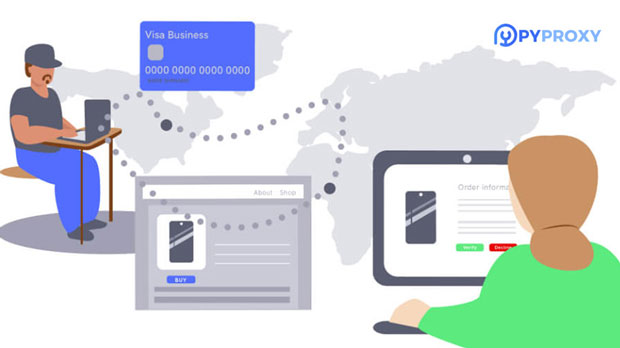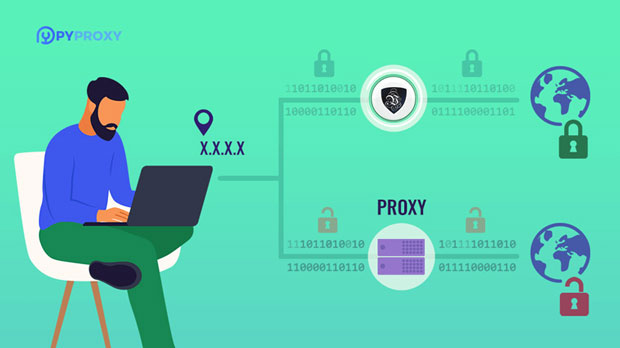Analysis of the Logging Functions of Squid Proxy and Py Proxy in Socks5 Proxy
The logging functions in socks5 proxy, Squid Proxy, and py proxy are integral in managing, monitoring, and troubleshooting network traffic. Logs offer detailed insights into how data flows through the proxy server, the requests made by clients, and how the server responds. These logs are valuable for system administrators and network engineers, providing essential information for performance monitoring, error diagnosis, and ensuring security compliance. In this article, we will explore the logging features of Socks5 Proxy, Squid Proxy, and Py Proxy, analyze how these functions work, and discuss their importance in maintaining a secure and efficient network environment. Understanding the Importance of Proxy Server LogsProxy servers act as intermediaries between a client and a destination server, handling requests and responses on behalf of users. Logging is an essential feature for any proxy service, as it provides a detailed record of the interactions between clients and the server. These logs contain information on connection attempts, data exchanges, and any errors or issues that arise. Logs can also record metadata such as the time of access, the client’s IP address, and the type of request made. These logs are useful for troubleshooting network issues, auditing traffic, and ensuring that policies are being enforced correctly.For network administrators, detailed logs help in tracking user activity, detecting potential security threats, and optimizing network performance. Furthermore, for compliance with various security standards, maintaining accurate and secure logs is critical.Socks5 Proxy Logging: Functionality and CapabilitiesSocks5 Proxy is a popular protocol for relaying network traffic. Unlike traditional HTTP proxies, Socks5 supports various types of traffic, including HTTP, FTP, and even UDP, making it highly versatile. The Socks5 proxy can record detailed logs of the data passing through it, offering valuable insights into user behavior and traffic patterns.Logging Features:- Authentication Attempts: Socks5 proxy can log the authentication attempts made by clients, which is crucial for identifying unauthorized access attempts and ensuring that only authorized users are allowed to connect.- Connection Logs: sock s5 proxies can track the IP addresses of clients, the destination IP addresses, port numbers, and the timestamps of each connection. This information can be useful for tracking network traffic and identifying abnormal activities or performance issues.- Error Logs: Any connection issues, failed authentication attempts, or server errors are logged, which helps system administrators troubleshoot problems effectively.The logging features in Socks5 proxies provide essential data for ensuring the security and reliability of network communications. By examining these logs, administrators can detect potential security breaches and optimize the proxy’s performance to handle various types of traffic more efficiently.Squid Proxy Logging: Advanced Features and Detailed AnalysisSquid Proxy is one of the most widely used caching proxy servers. It is primarily used for HTTP and HTTPS traffic, providing caching, access control, and content filtering. Squid offers advanced logging features that allow network administrators to monitor traffic more comprehensively.Logging Features:- Access Logs: Squid logs all client requests, including the requested URLs, status codes, and response times. This helps administrators track which websites are being accessed most frequently and identify potential security issues, such as suspicious websites or unauthorized content requests.- Cache Logs: As a caching proxy, Squid maintains a local cache of frequently accessed resources. The cache logs provide valuable information on which resources were cached, how long they stayed in the cache, and how often they were accessed. These logs are useful for optimizing cache performance and improving the proxy server's speed and efficiency.- Security Logs: Squid can be configured to log events related to security, such as failed login attempts, blocked access requests, or unauthorized access attempts. These logs help maintain security by detecting and responding to potential threats.One of Squid’s standout features is its ability to provide granular logging for different types of traffic and events. The logs can be customized to include specific details about HTTP headers, authentication methods, and even request/response content, making Squid a powerful tool for traffic analysis and security monitoring.Py Proxy Logging: Simplicity and CustomizationPy Proxy is a lightweight and flexible Python-based proxy server that can handle both HTTP and Socks5 traffic. While it does not come with as many advanced features as Squid, Py Proxy provides essential logging functions that can be customized according to the user’s needs.Logging Features:- Connection Logs: Py Proxy records basic connection details, such as the client’s IP address, the requested resource, and the timestamp of each request. These logs help administrators monitor network usage and track connections made to the proxy server.- Customizable Logging: Since Py Proxy is Python-based, it allows for easy customization of logging functionality. Administrators can configure Py Proxy to log additional details or filter out unnecessary information, depending on the level of monitoring required.- Error Logs: Like other proxy servers, Py Proxy logs any errors or failed attempts to establish a connection. This helps system administrators troubleshoot and resolve issues quickly.Py Proxy’s logging system is relatively straightforward and can be customized to meet the needs of different environments. While it may not offer the depth of logging features that Squid provides, its simplicity and flexibility make it a suitable option for smaller networks or projects where extensive logging may not be necessary.Comparative Analysis of Logging CapabilitiesWhen comparing the logging features of Socks5 Proxy, Squid Proxy, and Py Proxy, each has its strengths and limitations:- Socks5 Proxy is ideal for environments that require high flexibility and support for multiple types of traffic, such as HTTP, FTP, and UDP. Its logging features are robust, particularly for tracking client authentication and connection details, but it may lack the depth of logging available in Squid. - Squid Proxy stands out for its advanced logging capabilities. It offers detailed access logs, cache logs, and security logs, making it an excellent choice for larger networks or environments that require extensive traffic analysis and security monitoring. The detailed customization options available in Squid ensure that network administrators can tailor logs to suit their specific needs.- Py Proxy is a lightweight solution that offers essential logging functions, such as connection and error logs. While it may not have the advanced features of Squid, its simplicity and Python-based customization make it a good choice for smaller networks or for users who need a more basic proxy service.Conclusion: The Importance of Logs in Proxy ServersIn conclusion, logging is a critical function in any proxy server, whether it’s Socks5, Squid, or Py Proxy. Proxy server logs provide network administrators with the insights needed to monitor network traffic, troubleshoot issues, and ensure security compliance. While each type of proxy offers different levels of logging functionality, the value of logs in maintaining a secure and efficient network cannot be overstated.For businesses and organizations relying on proxy servers for secure and efficient internet access, understanding and utilizing the logging capabilities of their proxy solution is essential. With the right logging setup, administrators can detect and mitigate security threats, optimize network performance, and ensure that their proxy infrastructure operates smoothly.
2025-03-03























































